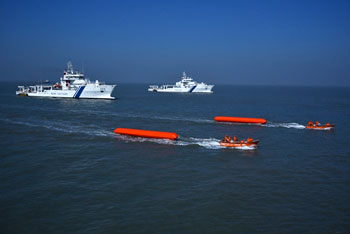INDIAN ARMED FORCES CHIEFS ON OUR RELENTLESS AND FOCUSED PUBLISHING EFFORTS

The insightful articles, inspiring narrations and analytical perspectives presented by the Editorial Team, establish an alluring connect with the reader. My compliments and best wishes to SP Guide Publications.

"Over the past 60 years, the growth of SP Guide Publications has mirrored the rising stature of Indian Navy. Its well-researched and informative magazines on Defence and Aerospace sector have served to shape an educated opinion of our military personnel, policy makers and the public alike. I wish SP's Publication team continued success, fair winds and following seas in all future endeavour!"

Since, its inception in 1964, SP Guide Publications has consistently demonstrated commitment to high-quality journalism in the aerospace and defence sectors, earning a well-deserved reputation as Asia's largest media house in this domain. I wish SP Guide Publications continued success in its pursuit of excellence.
- Appointments Committee of Cabinet approves one-month extension in service of Chief of the Army Staff
- Admiral Dinesh K. Tripathi assumes Command of the Indian Navy as 26th Chief of the Naval Staff
- Prime Minister witnesses 'Bharat Shakti' – a Tri-Services Firing and Manoeuvre Exercise in Pokhran, Rajasthan
- Interim Defence Budget 2024-25 — An Analysis
- Union Defence budget 2024
- Prime Minister Modi Commemorates Indian Navy Day in a Grand Ceremony
National level pollution response exercise

India’s energy requirements (approximately 70 per cent) are met by oil resource that is being imported into our country by ships. The transportation of oil through sea route is fraught with inherent risks and requires preventive measures to be taken both by the ship-owners and the oil receiving facilities inside port.
The Indian Coast Guard (ICG) is the central coordinating authority for oil spill response and has put into place a robust pollution response system to check the preparedness levels of oil handling agencies at regular intervals. The Gulf of Kutch houses ecologically sensitive mangroves and coral reefs, which are fraught with danger in case of an oil spill. To address issues relating to an oil spill, the sixth edition of National Level Pollution Response Exercise (NATPOLREX-VI) was conducted by the Indian Coast Guard on December 20-21, 2016, off Mundra in Gulf of Kutch. Representatives of various ministries and departments of central and state governments, ports, oil handling agencies and other stakeholders participated in the exercise. In addition, representatives of Oil Industry Safety Directorate and observers from three foreign nations also witnessed the NATPOLREX-VI exercise. Some 125 personnel from various agencies/stakeholders participated in the exercise.
Nine Coast Guard ships, two Coast Guard helicopters, two Dornier aircraft, one Indian naval ship, one air force aircraft (C-130J Super Herculeus), three tugs from KPT/Mundra Port, one tanker of the Shipping Corporation of India, 2 MSV/OSV from other resource agencies and teams for beach cleaning from state government also participated in the exercise.
The highlight of the exercise was participation of ICG pollution control vessels (PCV) and integration of air force into the Oil Spill Disaster Management System for aerial assessment/delivery of oil spill dispersant (OSD) for mitigation of the spilled oil. The NATPOLREX-VI was precluded by a table-top exercise on December 20, 2016, for simulation of the situation.
The Indian Coast Guard assumed responsibility of protecting marine environment in her maritime zones on March 1, 1986, when these responsibilities were transferred from the Ministry of Shipping. Subsequently, the Coast Guard prepared the National Oil Spill Disaster Contingency Plan (NOSDCP) for combating oil spill disaster at sea, which was approved by the committee of secretaries in 1993. The Indian Coast Guard has also established three Pollution Response Centres at Mumbai, Chennai and Port Blair and has the capability to respond to oil spills up to 10,000 tonnes with assistance of various agencies.
Chief Minister of Gujarat Vijaybhai R. Rupani reviewed the preparedness of all agencies during the exercise on December 21, 2016, from onboard Coast Guard ship Sarathi along with Rajendra Singh, PTM, TM, the Director General of the Indian Coast Guard.





